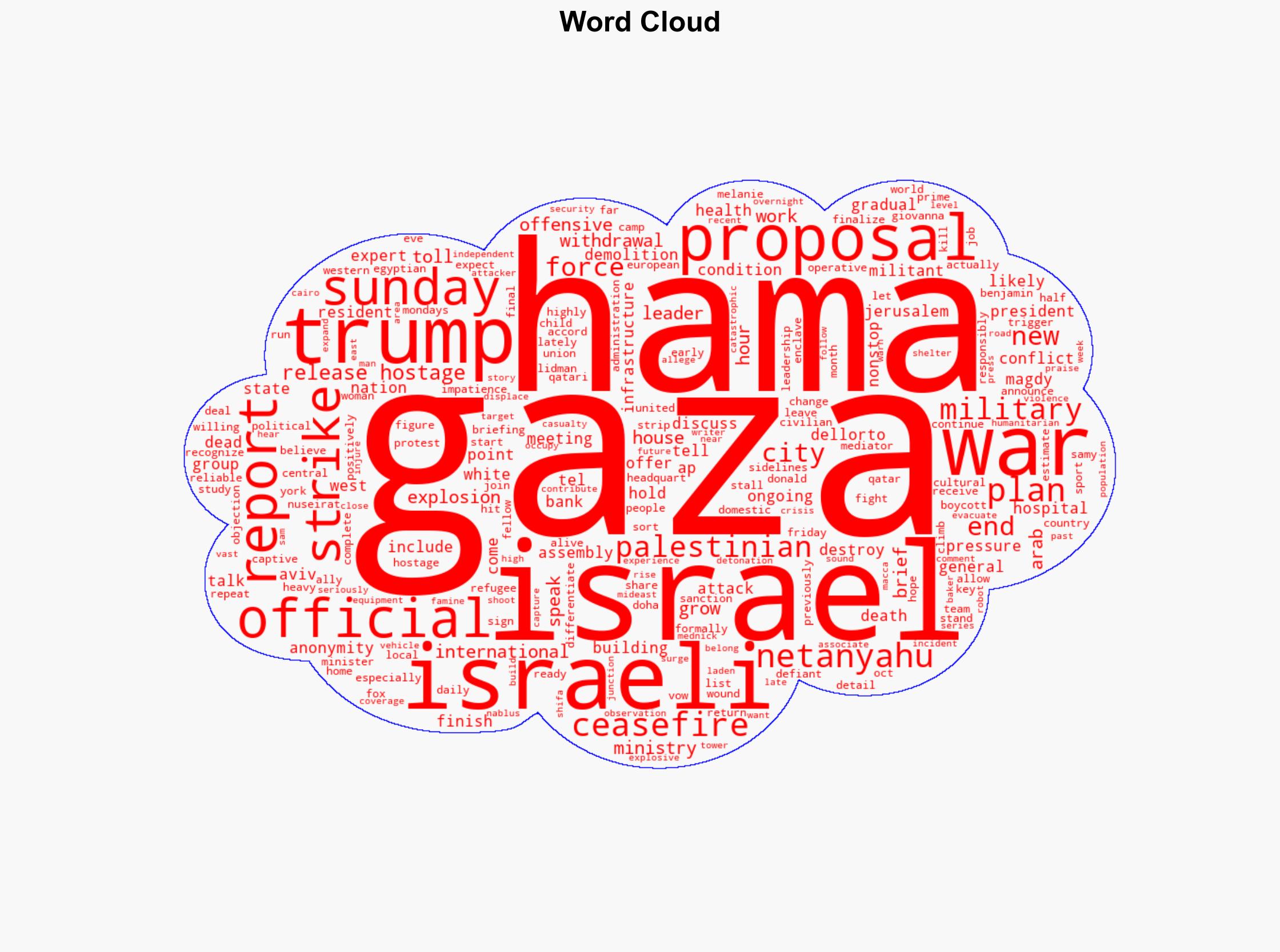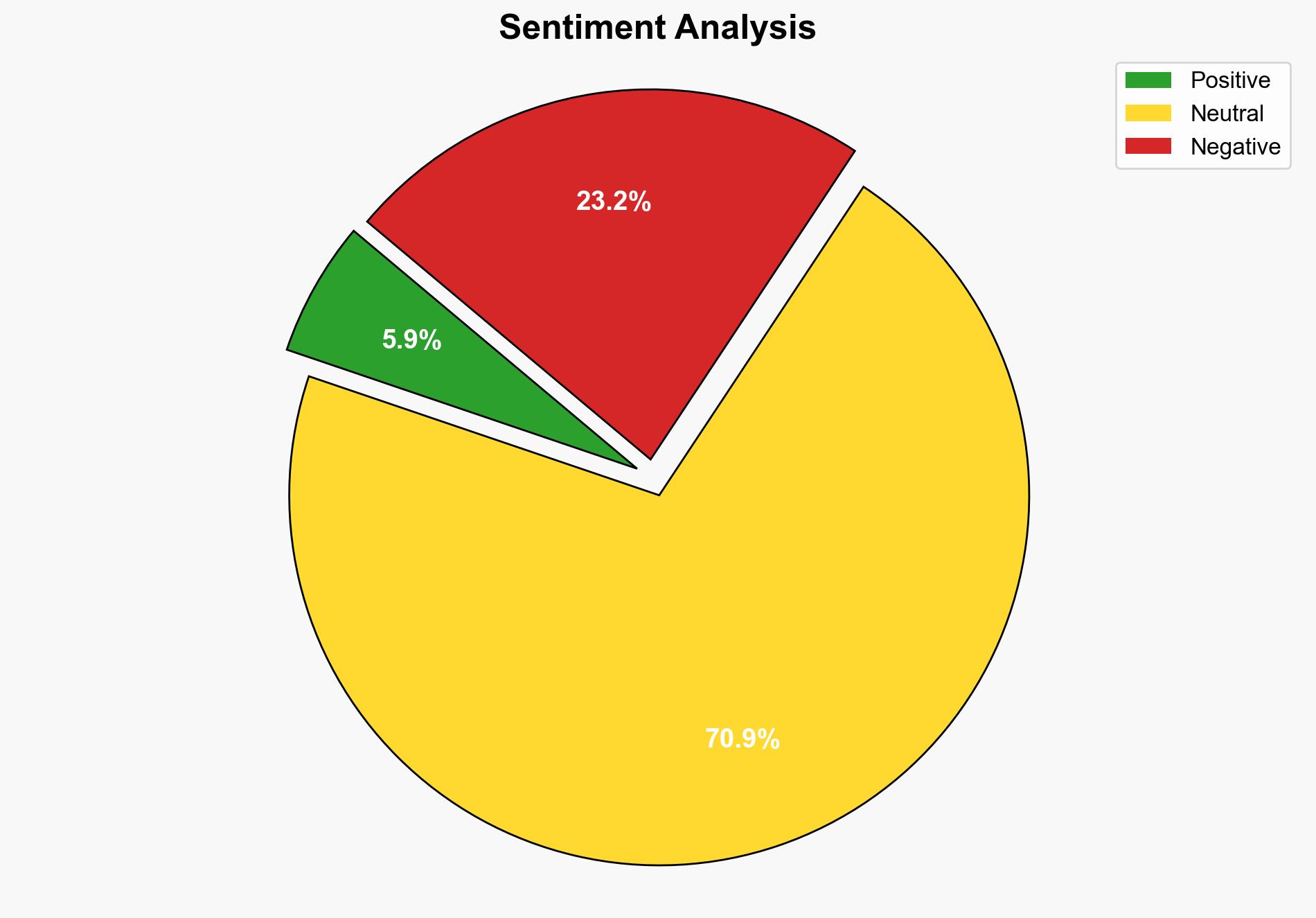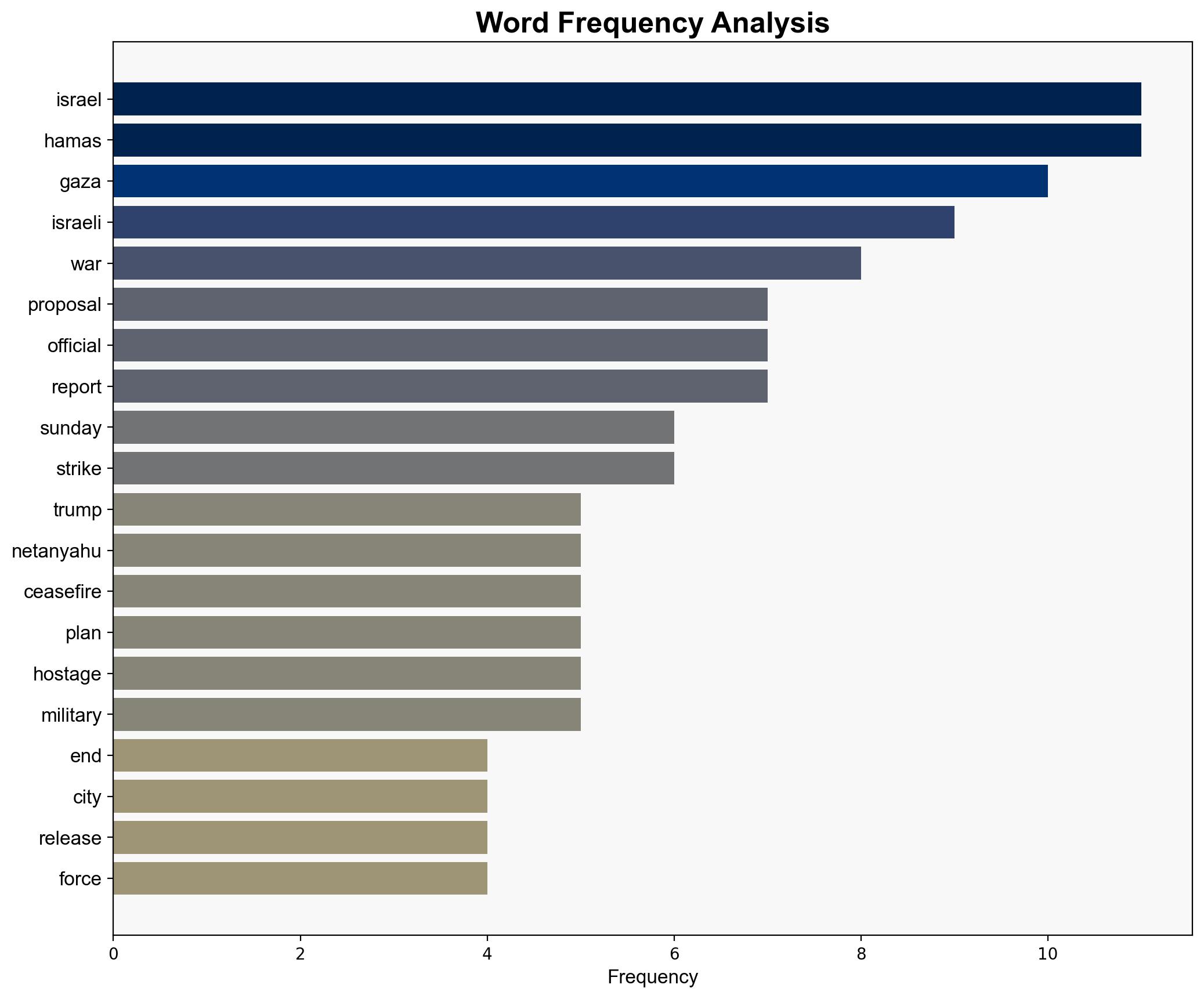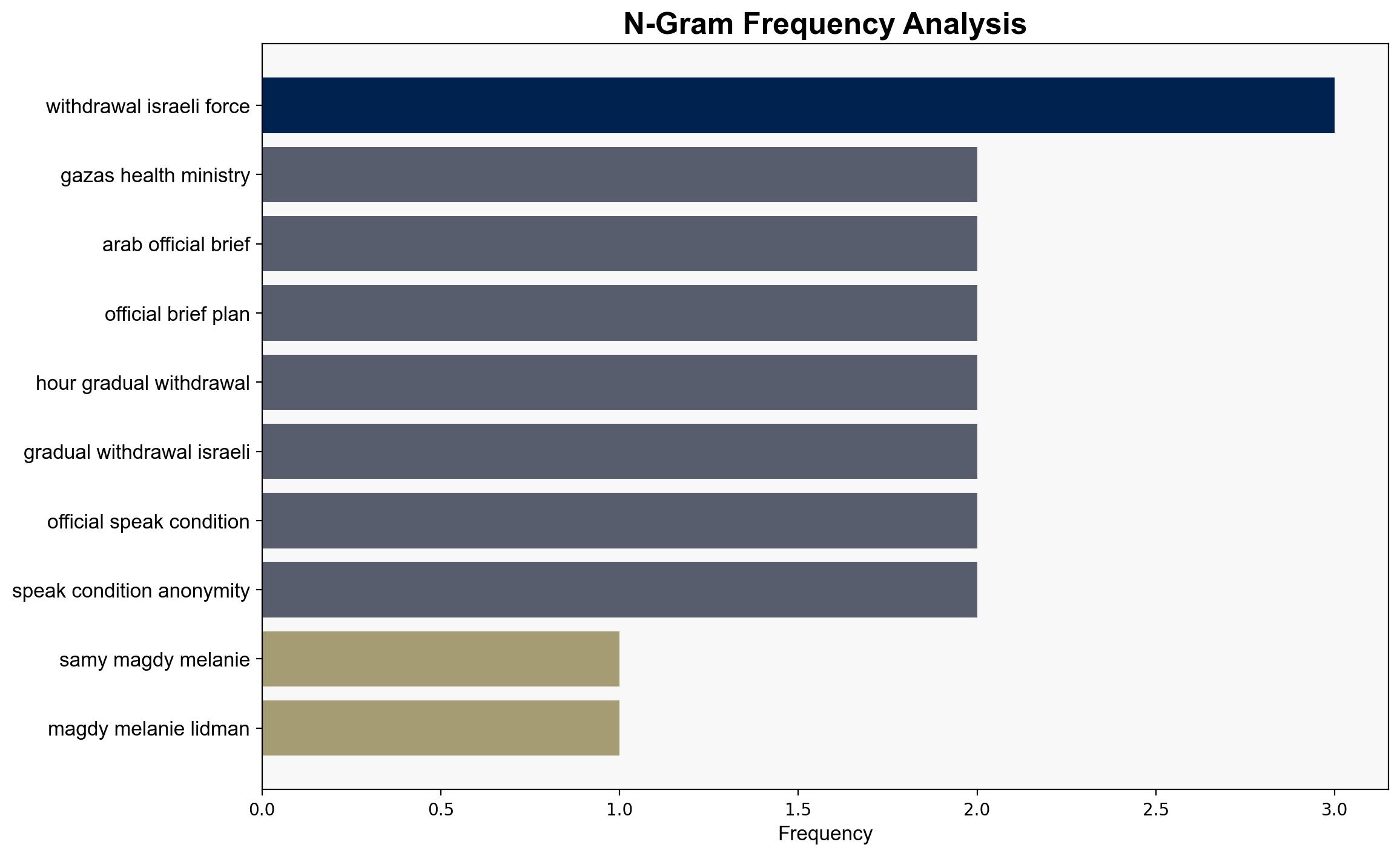Netanyahu says Israel working on ceasefire plan on eve of Trump meeting Gaza death toll tops 66000 – Boston Herald
Published on: 2025-09-28
Intelligence Report: Netanyahu says Israel working on ceasefire plan on eve of Trump meeting Gaza death toll tops 66000 – Boston Herald
1. BLUF (Bottom Line Up Front)
The most supported hypothesis is that Israel is genuinely working towards a ceasefire plan under international pressure, with a moderate confidence level. The strategic recommendation is to closely monitor the developments of the ceasefire proposal and its reception by Hamas and other regional stakeholders. This report uses Analysis of Competing Hypotheses (ACH) to evaluate the situation.
2. Competing Hypotheses
1. **Hypothesis A**: Israel is sincerely working on a ceasefire plan to end the conflict, primarily due to international pressure and the need to mitigate further escalation and casualties.
2. **Hypothesis B**: The ceasefire plan is a strategic maneuver by Israel to temporarily alleviate international pressure without a genuine commitment to ending hostilities, allowing time to regroup or achieve military objectives.
Using ACH, Hypothesis A is better supported by the evidence of international pressure and the involvement of multiple stakeholders, including the U.S. and Arab officials. However, Hypothesis B cannot be entirely discounted due to the historical context of similar situations where ceasefire talks have stalled or failed.
3. Key Assumptions and Red Flags
– **Assumptions**:
– Israel is acting under significant international pressure.
– The ceasefire proposal is being developed in good faith.
– **Red Flags**:
– Lack of concrete details about the ceasefire plan.
– Anonymity of officials discussing the plan, which may indicate uncertainty or lack of consensus.
– Historical precedent of failed ceasefire negotiations in similar contexts.
4. Implications and Strategic Risks
– **Implications**: A successful ceasefire could stabilize the region temporarily, reducing casualties and allowing humanitarian aid. However, failure to reach an agreement could lead to further escalation and increased international condemnation.
– **Strategic Risks**: Prolonged conflict may lead to broader regional instability, potential involvement of additional state and non-state actors, and increased economic and humanitarian costs.
5. Recommendations and Outlook
- Monitor the progression of ceasefire negotiations and the reactions of key stakeholders, particularly Hamas and regional powers like Egypt and Qatar.
- Prepare for potential scenarios:
– **Best Case**: Successful ceasefire leading to long-term peace talks.
– **Worst Case**: Breakdown of talks resulting in intensified conflict.
– **Most Likely**: Temporary ceasefire with ongoing tensions and sporadic violence. - Engage with international partners to support diplomatic efforts and humanitarian aid initiatives.
6. Key Individuals and Entities
– Benjamin Netanyahu
– Donald Trump
– Hamas leadership
– Arab officials involved in the ceasefire discussions
7. Thematic Tags
national security threats, regional focus, conflict resolution, international diplomacy




